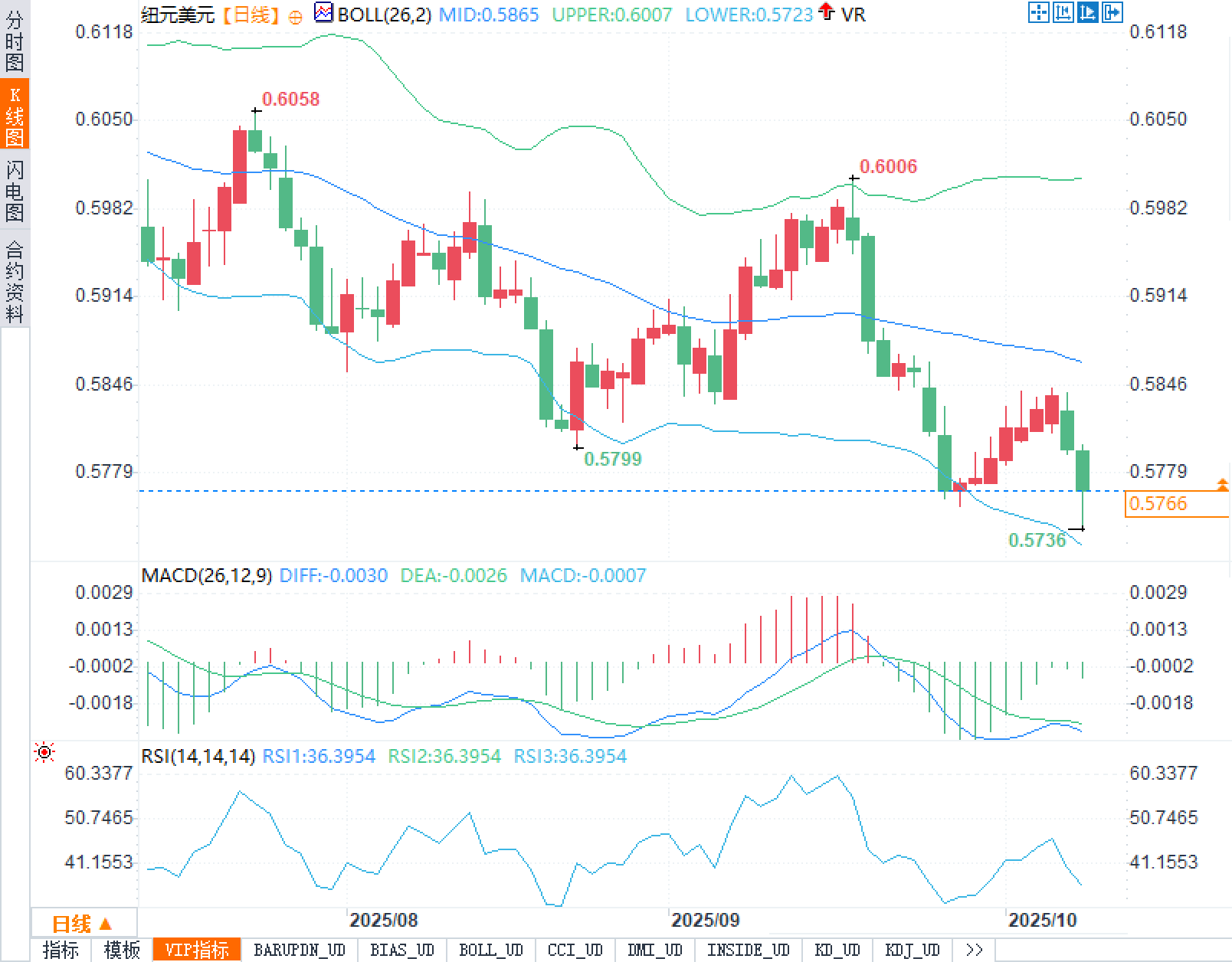"Hit the bone" doves: excessive easing pushes the New Zealand dollar to the forefront
2025-10-08 18:33:12

Fundamentals:
The Reserve Bank of New Zealand's (RBNZ) "extraordinary rate cut" virtually confirms its deep concern about the domestic economic slowdown. Commerzbank notes that despite a recent slight pickup in inflation, the central bank is more concerned about a renewed slowdown in economic momentum and believes weak demand will naturally suppress prices in the coming quarters, leading it to adopt a more aggressive approach to front-loaded easing. While the central bank hasn't closed the door to further rate cuts, some foreign exchange strategists believe the probability of another cut in the coming months is low. For one thing, inflation is likely to remain above the 2% target in the third quarter. Furthermore, the current RBNZ Chair will hold his final meeting in late November, with a new Chair taking over in December. During policy transitions, policymakers are typically reluctant to signal a series of rate cuts—perhaps a compensatory measure for this unexpected move.
The OCBC team took a more forward-looking approach: after being surprised by the 50 basis point cut, they adjusted their baseline scenario to a further 25 basis point cut to 2.25% in November, and suggested the possibility of a further cut to 2.0% in early 2026. This suggests that policy rate differentials and carry trade frameworks will continue to loosen, and the New Zealand dollar may continue to lag behind its "close relative" Australian dollar in major crosses.
Externally, the dollar's upside may be limited: the market awaits the September FOMC minutes, due the following morning, to calibrate its pricing in the Fed's path. The FOMC cut interest rates by 25 basis points to a range of 4.00%-4.25% in September and signaled a preference for two more 25 basis point cuts this year. Federal funds rate futures (CME FedWatch) indicate an 82% market consensus for two 25 basis point cuts this year.
Technical aspects:
The daily chart shows the exchange rate trading near the lower Bollinger Band (0.5865, 0.6007, and 0.5723). The price has repeatedly fluctuated within a narrow range above the lower band, reflecting the lower edge of the Bollinger Bands following a squeeze. The short-term trend remains predominantly downtrend. Two key pivots are currently at 0.5800 (a retracement near the previous rebound high) and 0.5736 (the low after the most recent breakout). Above, existing resistance lies at 0.5865 (the middle Bollinger Band) → 0.6006 → 0.6058, all corresponding to previous candlestick highs or bands, creating a multi-level resistance pattern.

In terms of momentum, the MACD shows DIFF at -0.0030, DEA at -0.0026, and MACD histogram at -0.0007. Both lines are below the zero axis and slightly flattening. If the negative histogram narrows and a retest above the zero axis occurs, the probability of a technical rebound will be triggered. The RSI is 36.3954, at the lower neutral edge and approaching the oversold edge, suggesting that the technical conditions for a short-term rebound/mean reversion are gradually in place, but a strong signal has not yet formed.
Initial support and resistance levels are as follows: 0.5736/0.5723 support. If this fails, the 0.5700 psychological barrier will be tested. Resistance levels are 0.5800/0.5865, and further up are 0.6006/0.6058. Until a breakthrough is achieved, the exchange rate is likely to remain in a weak oscillation pattern towards the lower edge of the range.
Market sentiment observation:
Today's unexpected rate cut reinforced the "weaker economy" narrative within a reflexive framework, leading to a predominantly bearish market sentiment. While not directly reflected in the Money Flow indicator, the proximity of prices to the lower band and the blunting of the Momentum indicator suggest a concentrated short-term "short-selling" sentiment, diminishing the marginal impact of panic selling, and a subtle shift in market consensus from a "unilateral downturn" to a "minor rebound followed by a selective move."
At the options level, the term structure of expected volatility is trending toward "short-end increases and long-end moderation," reflecting volatility divergence related to event risk (FOMC minutes) and uncertainty about the policy path. Overall, bearish market sentiment remains dominant, but has not yet reached the "panic threshold."
Key price points:
Support: 0.5736 / 0.5723 / 0.5700 (Psychological).
Resistance: 0.5800 / 0.5865 / 0.6006 / 0.6058.
Indicator tracking: Pay attention to whether the RSI 36.4 can return to the 40-50 range, whether the negative MACD column continues to narrow, and whether the Bollinger Band width expands to confirm the direction selection.
- Risk Warning and Disclaimer
- The market involves risk, and trading may not be suitable for all investors. This article is for reference only and does not constitute personal investment advice, nor does it take into account certain users’ specific investment objectives, financial situation, or other needs. Any investment decisions made based on this information are at your own risk.





















